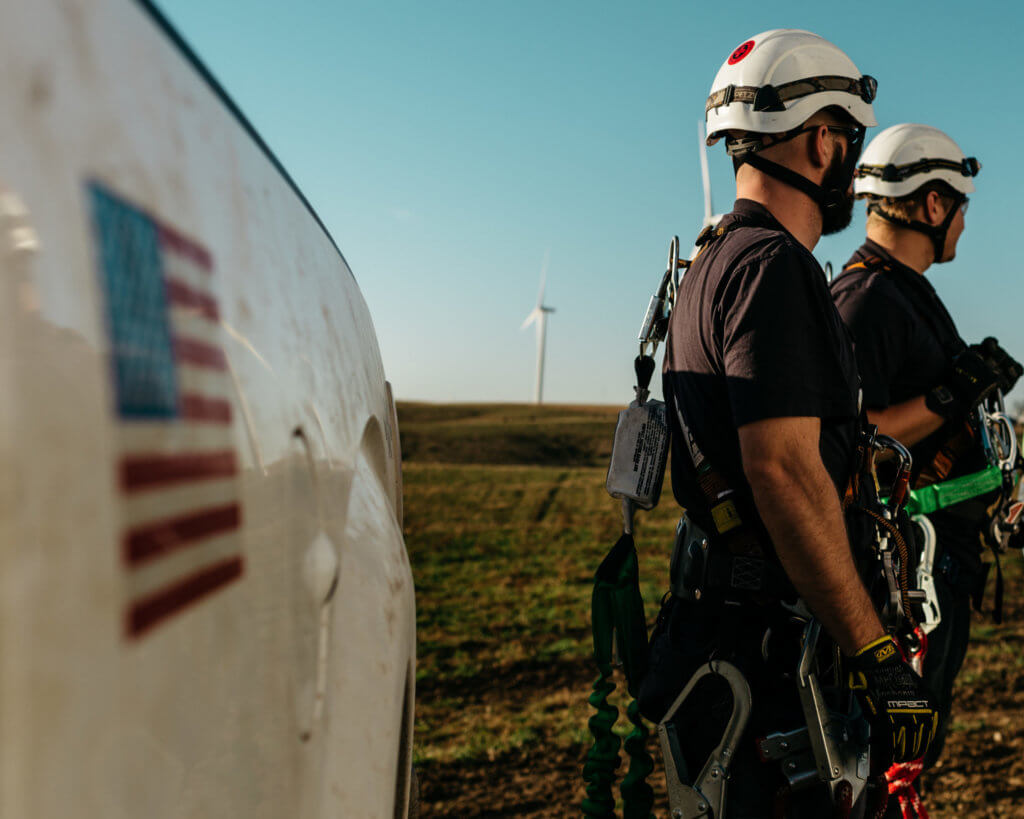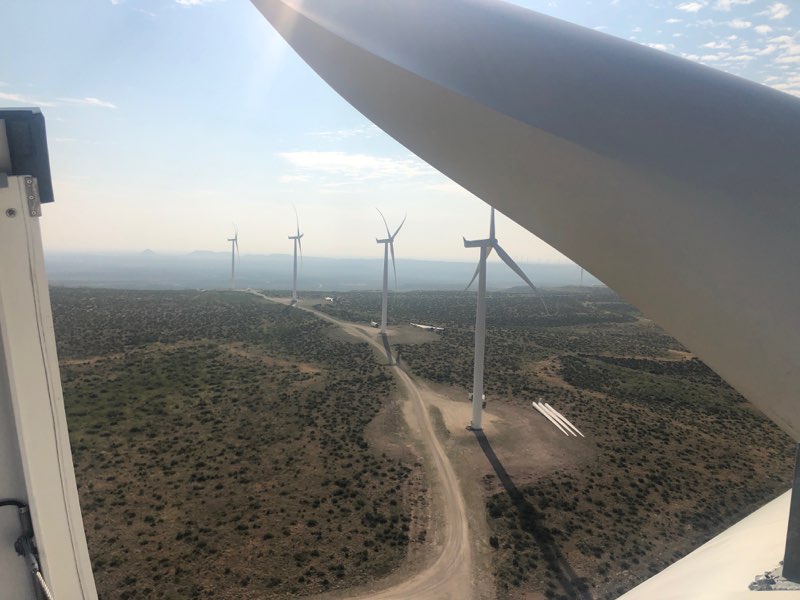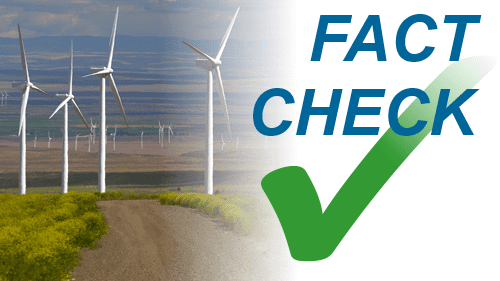Anti-wind-farm 'astroturfers' in Australia
[This article originally appeared at Independent Australia, and is reprinted by permission. Emphasis added on two paragraphs concerning turbine sound.]
Independent Australia has made it to Federal Parliament, with Sandi Keane’s investigation into anti-windfarm astroturfers the Landscape Guardians and the Waubra Foundation being used as the basis of an exposé by John Murphy MP in the House of Representatives earlier this week.
Here we present his speech in full (from Hansard, Wednesday, 15 February 2012, House of Representatives, page 111):
Mr MURPHY (Reid) (10:16): I rise this morning to support the Appropriation Bill (No. 3) 2011-2012 and the Appropriation Bill (No. 4) 2011-2012, because they will provide funding over four years to establish a Clean Energy Regulator to administer the carbon-pricing mechanism. The regulatory functions under the National Greenhouse and Energy Reporting System, the renewable energy target and the Carbon Farming Initiative will also be brought under the Clean Energy Regulator.
The responsibilities of the regulator will include assessing emissions data to determine each entity’s liability; operating the Australian National Registry of Emissions Units; monitoring, facilitating and enforcing compliance with the carbon-pricing mechanism; allocating fixed-price and auction permits; applying legislative rules to determine eligibility for assistance in the form of freely allocated permits; and providing education on the carbon-pricing mechanism. And as you know, Deputy Speaker, the government will also provide further funding over four years for the Department of Finance and Deregulation to conduct gateway reviews of the establishment and operation of the regulator.
The bills also provide funds to the Department of Sustainability, Environment, Water, Population and Communities to support the management of extractive industry activities, especially coal seam gas and major coalmining developments. These initiatives aim to build scientific evidence and understanding of the impacts on water resources of coal seam gas extraction and large coalmines.
The New South Wales government has already taken the scientific evidence for granted on coal seam gas extraction but, like its Liberal counterpart in Victoria, seems intent on standing in the way of businesspeople who want to develop wind power to feed into the electricity grid. Despite the lack of any evidence to support any harmful effects of wind farming, the New South Wales government has given the power of veto to anyone living within two kilometres of a proposed wind farm. These governments seem to have been unduly influenced by climate change deniers and sceptics, in particular the Australian Landscape Guardians, whose stated philosophy is to safeguard the landscape from ‘inappropriate development’.
In an article published on the Independent Australia website on 24 July last year, investigative journalist Sandi Keane assembled some of the publicly available information on the opaque Landscape Guardians.
They are modelled on the British Coastal Guardians and Country Guardians, who are associated with the nuclear power industry in the United Kingdom. In their opposition to wind farms, the Landscape Guardians do not mention the landscape but have discovered a previously unheard of medical condition that they call ‘wind turbine syndrome’. They claim that wind farms cause sleep problems, headaches, dizziness, nausea, exhaustion, anxiety, anger, irritability, depression, tinnitus and concentration problems, and, astonishingly, they cause children to refuse to go to school. It’s the truth!
The Landscape Guardians have set up a front called the Waubra Foundation, which is not based at Waubra but opposes the Waubra wind farm. Its so-called medical director, Sarah Laurie, a non-practising, unregistered doctor living in South Australia, claims that infrasound from wind turbines causes these problems. Most of my constituents at times suffer from almost all of these symptoms, although there is no wind farm anywhere near my inner-city electorate. Simon Chapman, Professor in Public Health at the University of Sydney, says that these symptoms are experienced by millions of Australians.
It is important to note that the Waubra Foundation is a powerful, well-resourced and growing anti-wind-power lobby group. Peter Mitchell, founder and Chairman of the Waubra Foundation, helped set up and fund the Australian Landscape Guardians. He is also spokesman for the Western Plains Landscape Guardians. Another director, Kathy Russell, is Vice-President of the Australian Landscape Guardians, Vice-President of the Victorian Landscape Guardians and spokesperson for the Western Plains, Mount Pollock Landscape Guardians and the Barrabool Hills Landscape Guardians. Yet another director, tycoon Tony Hodgson—as the Murdoch press calls him—helped fund the campaign against the Collector wind farm in New South Wales, just up the road from Canberra, and he is involved with the Booroowa Landscape Guardians to stop a $400 million wind farm proposed near Rugby and Booroowa in the south of the state. The Hon. Dr Michael Wooldridge, the former Howard government minister, is also a director.
Sandi Keane found that the foundation has no physical address in Waubra and indeed appears to have no local Waubra residents on its board. The address is a post-office box in South Melbourne, the same address as that of the Australian Landscape Guardians and Peter Mitchell.
The Landscape Guardians are well-known climate sceptics and deniers linked to the Liberal Party and the Institute of Public Affairs. They have a particularly close association with the IPA’s Australian Environment Foundation, which is more interested in logging trees than conserving them. The Institute of Public Affairs has been giving its opinion on climate change for decades now on behalf of its supporters—Billiton; Western Mining; Caltex; Esso Australia, a subsidiary of Exxon; Shell; and Woodside Petroleum—and it also receives funding from Rupert Murdoch’s News Ltd.
While the Waubra Foundation appears unconcerned about the landscape of wind farms, its only agenda is the so-called ‘infrasound problems’ caused by wind turbines. Peter Mitchell successfully objected to the number of turbines proposed for the Stockyard Hill wind farm near Beaufort in Victoria. He also successfully had them removed from the ridge that he could see from his property. Sandi Keane found also that Peter Mitchell has interests in the fossil fuel industry. These include as founding chairman of the Moonie Oil Company Ltd and chairman or director of similar companies including Clyde Petroleum plc, Avalon Energy Inc., North Flinders Mines Ltd and Paringa Mining & Exploration plc, most now delisted on the Australian Stock Exchange.
According to Lowell Resources Funds Management Pty Ltd, Mitchell’s experience is derived from over 25 years involvement in companies that explored for, developed and financed gold, uranium, coal and base metal mines, oil and gas fields and pipeline systems in Australia and overseas. He has been chairman of Lowell Pty Ltd, the ultimate parent company of both Lowell Capital Ltd and Lowell Resources Funds Management Pty Ltd, a specialist fund investing in emerging mining and energy companies, since taken over by Future Corporation Australia Ltd.
Paul Miskelly, who represents both the Australian Landscape Guardians and the Taralga Landscape Guardians, worked for the Australian Nuclear Science and Technology Organisation, ANSTO, for 32 years and gives talks on nuclear power. Climate scepticism is the stock in trade of the Landscape Guardians. Randall Bell, president of the Victorian Landscape Guardians, said in the Melbourne Age on 3 July 2010 that claims the earth is warming are scientifically unreliable and that the idea of man-made climate change is headed for the Y2K dustbin. But we do not see the Landscape Guardians campaigning alongside Lock the Gate, the New South Wales Farmers Federation and the Greens to halt the destruction of some of the best agricultural land in New South Wales and Queensland by coal seam gas miners. We do not see them campaigning in Victoria against Premier Ted Baillieu’s decision to reopen Victoria to brown coal mining. Farmers on the best agricultural land in Gippsland now face losing their farms to dirty, inefficient brown coal mining. Is an open-cut mine a preferable landscape to a wind farm, where food can continue to be grown?
As with the Landscape Guardians, there is no information about funding or sponsorship of the Waubra Foundation. Yet money seems to be no object for its websites, campaigners, advertising, travel and media monitoring.
As I said earlier, in the Boorowa area a $300 million wind farm is being proposed. At Rye Park the Epuron energy company wants to build 80 to 110 turbines, which will generate power for 90,000 homes. But, as Sandi Keane found, there is someone with a property near Yass whose influence on governments and public opinion is huge. Besieged media boss Rupert Murdoch owns Cavan, a substantial rural property in the grazing country nearby. No other media group in Australia has run a more distorted and dishonest scare campaign about wind farms than the Murdoch group. The district of Yass has in the planning stages a larger proportion of wind farms than elsewhere in Australia. These are planned at Bango, 25 km north of Yass; Birrema, 30 km west of Yass; Rye Park, 25 km north-east of Yass; and the Yass Valley itself. There are wind farms at Caroll’s Ridge, Conroy’s Gap, Coppabella Hills and Marilba Hills.
In 2010 Family First’s own climate change sceptic, Senator Steve Fielding, initiated a Senate inquiry into so-called turbine sickness. The report was released last year. The Senate inquiry found no proof of a direct link between wind farms and the so-called wind turbine syndrome. The submission of the National Health and Medical Research Council concluded that there is no published scientific evidence to support adverse effects of wind turbines on health.
Professor Peter Seligman of the Melbourne Energy Institute also gave evidence to the inquiry. Professor Seligman spent most of his working life working on the cochlear implant. He has a PhD in electronic engineering. He understands infrasound better than most. He told Sandi Keane that the level of infrasound at the beach is far higher than that from wind farms. Beyond 360 metres the level of infrasound emitted from a wind farm, typically between one and 20 cycles per second, is below the ambient levels near a beach and below that in the central business district of any city. On the other hand, we are all subjected to far higher internally self-generated natural infrasound levels, which clearly are not a problem.
The Victorian Department of Health indicated that it had examined both peer-reviewed and validated scientific research and concluded that ‘the weight of evidence indicated that there are no direct health effects from noise.’
Dr Sarah Laurie’s evidence included evidence from Nina Pierpont, an American general practitioner who claims to be an authority on wind turbine syndrome. Pierpont is the author of a self-published book containing descriptions of the health problems of merely 10 families—that is, 38 people—in five different countries who once lived near wind turbines and who are convinced that turbines made them sick. Medical experts in Australia have said that, given that there are about 100,000 turbines around the world, her sample is too small to have any scientific value. There were no scientific controls, and the symptoms described were common in any community. Dr Laurie also tried to appeal against a proposed wind farm at Allandale East in South Australia. Her appeal failed on the basis of the same evidence from the medical community. Gary Wittert, a professor of medicine at the University of Adelaide, said there was no credible evidence that wind turbines have adverse effects on health. A recent parliamentary inquiry into wind farms in New South Wales dismissed Pierpoint’s study, particularly since her findings were not published in a peer reviewed journal. In its submission to the Senate inquiry the group Doctors for the Environment also agreed ‘there is no convincing evidence in the scientific literature of direct physiological effects occurring at sound levels commonly associated with modern wind turbines’. The building of the Waubra wind farm provided an injection of $58.4 million to the local economy through the economic activity associated with 160 local jobs. Ongoing employment from those jobs at Waubra adds a further $7.79 million each year to the local economy. These figures have been generated by the City of Ballarat using REMPLAN modelling.
Kate Redwood, a director of Hepburn Wind, said the strategy used to get community support in Daylesford included monitoring noise at those houses within two kilometres of the turbines. This successful strategy has led to the formation of a new organisation called Embark, which offers advice on the management of community projects. As a result of the Senate inquiry, public health authorities will keep up the monitoring and the wind industry will continue to improve its modelling and community relations. I commend the bills to the House.

This work is licensed under a Creative Commons Attribution-NonCommercial-NoDerivs 3.0 Australia License
Related articles:
NBC4's 'iReporter' lacks context on wind turbine sound, February 14, 2012
Fact check: Bryce misleads again on land, sound, resource use, January 31, 2012
Despite science, wind turbine sound sparks discussion in Wisconsin, January 30, 2012
Massachusetts clears wind of health effects after independent experts review evidence, January 20, 2012
Opinion: Dr. W. David Colby: Turbines and health, December 2, 2011
Canadian researchers: No direct link between wind turbines and health, November 29, 2011
Wind power: A quiet solution to climate change, June 27, 2011
Sierra Club Canada 1.1: Time to confront anti-wind fear campaign, June 15, 2011
Environmental Defence (Canada): 'No basis' for health impact claims, June 6, 2011
Sierra Club Canada: Time to confront anti-wind disinformation campaign, June 3, 2011
WINDPOWER report: New study finds minimal low-frequency and infrasound impact from wind turbines, May 25, 2011
Does the sound of money soothe Wind Turbine Syndrome?, April 25, 2011
WHO guidelines on sound are … guidelines, March 28, 2011
Scientists, doctor weigh in on wind and health, November 30, 2010
Wind turbine sound: The neighbors speak, March 18, 2010
Expert panel concludes wind turbine sounds not harmful to human health, December 15, 2009





